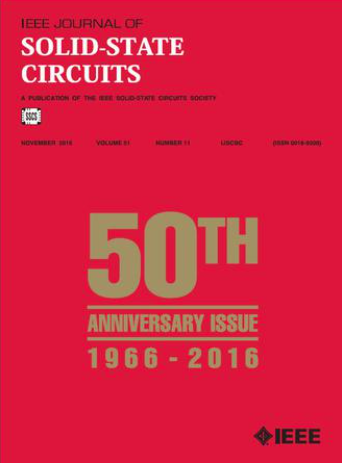SESOMP:面向物联网设备的可扩展高能效自组织地图处理器
IF 5.6
1区 工程技术
Q1 ENGINEERING, ELECTRICAL & ELECTRONIC
引用次数: 0
摘要
本文提出了一种基于内存计算(CIM)的自组织映射(SOM)硬件体系结构,以解决频繁访问内存导致的高功耗问题。所提出的CIM宏在记忆中处理权重减法和神经元更新,在回忆和学习阶段分别减少50%和80%的记忆访问。此外,对更新率极低的神经元进行自适应剪枝,避免不必要的信号切换,节能高达12.5%。采用CMOS 65纳米工艺制作的测试芯片在学习和回忆阶段的峰值功率效率分别为449.1 GCUPS/W和556.5 GCPS/W。此外,芯片间通信的芯片到芯片链路(C2CL)提高了系统的可扩展性。各种应用,包括数据聚类,图像量化和手势识别与不同的SOM神经网络的大小,已经成功地在原型芯片上进行了测试。本文章由计算机程序翻译,如有差异,请以英文原文为准。
SESOMP: A Scalable and Energy-Efficient Self-Organizing Map Processor for IoT Devices
This article proposes a novel self-organizing map (SOM) hardware architecture based on computing-in-memory (CIM) for addressing high power consumption caused by frequent memory access. The proposed CIM macros process weight subtraction and neuron update in memory, reducing memory access during recall and learning stages by 50% and 80%, respectively. Besides, the neurons with extremely low update rates are pruned adaptively to avoid unnecessary signal toggling, saving power by up to 12.5%. The test chip fabricated in CMOS 65-nm technology achieves the peak power efficiency of 449.1 GCUPS/W and 556.5 GCPS/W during the learning and recall stages, respectively. Moreover, the chip-to-chip link (C2CL) for inter-chip communication improves the scalability of the system. Various applications, including data clustering, image quantization, and gesture recognition with different SOM neural network sizes, have been tested on the prototype chip successfully.
求助全文
通过发布文献求助,成功后即可免费获取论文全文。
去求助
来源期刊

IEEE Journal of Solid-state Circuits
工程技术-工程:电子与电气
CiteScore
11.00
自引率
20.40%
发文量
351
审稿时长
3-6 weeks
期刊介绍:
The IEEE Journal of Solid-State Circuits publishes papers each month in the broad area of solid-state circuits with particular emphasis on transistor-level design of integrated circuits. It also provides coverage of topics such as circuits modeling, technology, systems design, layout, and testing that relate directly to IC design. Integrated circuits and VLSI are of principal interest; material related to discrete circuit design is seldom published. Experimental verification is strongly encouraged.
 求助内容:
求助内容: 应助结果提醒方式:
应助结果提醒方式:


